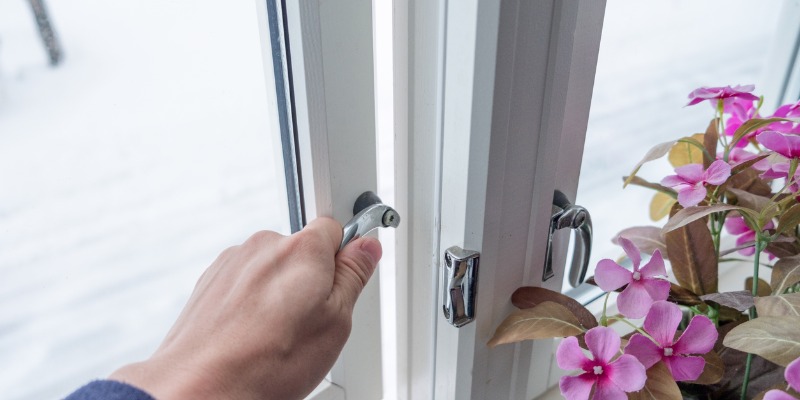
Most homeowners don’t give much thought to the quality of the air in their homes. However, air quality is especially important for your family’s health. Having good air quality protects your family from allergies as well as having bacteria, mould, mildew, dust mites, and viruses floating around your home. This indoor air quality guide will explain everything you need to know about air quality and how to improve the indoor air quality in your home.
The Government of Canada provides indoor air quality standards that indicate safety levels of common contaminants found in the home. It might seem odd to think contaminants exist in your house, but there are many factors that can contribute to poor air quality including:
There are also many unexpected things that can contribute to poor air from poor ventilation to clutter and poor lighting. So, why is indoor air quality important? Because it affects your health.
The Government of Canada produced Residential Indoor Air Quality Guidelines explaining the risks associated with specific indoor pollutants. Exposure over the long term can cause health issues, but there are also short-term limits outlined by the government. Contaminants include everything from mould and fine particles to chemicals ranging from formaldehyde to benzene. Gases including carbon monoxide and radon are also listed as possible air contaminants.
There are many different contaminants detected in air quality tests including:
You can hire a professional air quality test company, and many specialize in specific air quality tests. For example, there are tests specifically for mould as well as asbestos. Many homeowners wonder where to buy air quality test kits from - you can find them at major hardware and home renovation centers.
One of the most dangerous risks for air quality in your home is carbon monoxide. Every home should have functioning carbon monoxide alarms/smoke detectors. When it comes to other risks, you can arrange for testing if you believe you are at risk. However, it is better to look for ways to improve indoor air quality.
First, look for possible causes of poor air quality including:
In some cases, it can be hard to spot issues, such as wood-plastic composites. In newer homes, you can contact your builder to find out what materials were used. Because it is a challenge to detect the culprits causing indoor air quality issues, your best bet is to improve your indoor air quality.
In general, the best way to improve air quality is to reduce air contaminants. Indoor air pollution can be cut off at the source by:
Because dampness is a major contributor to highly irritable mould, you can reduce moisture risk in your home by:
A clean home is more likely to have fewer allergens and contaminants in the air. Improve house cleaning to reduce dust and other particles that can reduce air quality. Vacuum often with a vacuum using high-efficiency particle air (HEPA) filters. Improving airflow in your home is also important. Keep vents in your home clear and open windows on days when air pollution is low. Your HVAC should also have an efficient filtration system such as a whole-house HEPA filter built into the ductwork. Filters should be replaced regularly.
If outdoor air quality is poor, reduce air entering your home by closing the windows and using your air conditioning.

Renovations introduce new chemicals into your home, while also adding contaminants and dust into the air. Always make sure you are allowing proper ventilation especially for projects such as painting and varnishing. Check to find the best products to reduce chemicals such as low VOC (Volatile organic compounds) paints and natural products for floors and furnishings. You can also cordon off areas of the house where work is done to reduce the spread of contaminants through the home. Building materials can release gases including:
Always follow the manufacturer's instructions for installation and use to reduce risk.
Other common household items can release gases full of contaminants such as VOCs as well as particles. Some common items include:
Always read labels of the products you buy and use to ensure you make wise purchases and reduce the risk for releasing contaminants.
Indoor air pollution causes many health issues including:
Many common indoor air pollutants include bacteria such as legionella, which can cause Legionnaire’s disease, a serious form of pneumonia. Radon, a gas that can be found in homes causes lung cancer. Allergies are aggravated by many air contaminants from dust mites to pet dander and tobacco smoke to mould. It also increases the risk for those with existing issues, especially people with asthma.
With so many indoor allergens floating about in your home, it’s not surprising many people ask, “Why are my allergies worse indoors?” Indoor allergies are caused by a long list of allergens including:
However, there are other irritants specific to your home’s air that could be causing issues as well.
Indoor allergy symptoms include:
You or family members might display all or just a few of these symptoms. As well, it might take just one allergen to affect someone, while others might suffer due to allergies to multiple allergens.
Your best defense against indoor allergies is to take preventative measures. The tips offered above to improve air quality address allergens at their source. Some people might ask, “Do indoor plants help indoor quality?” The answer is yes and no, depending on the cause of your allergies. As noted on the list of common household allergens, some people might be allergic to certain types of household plants. If you know you aren’t allergic to plants, you can use houseplants to bring some green into your home, while offering a natural air filter. A good choice is a golden pothos, as it looks good and is low maintenance. Plants can reduce VOCs, formaldehyde, and benzene in the home, but the number of plants required, and the effectiveness will vary.
Air cleaners can be quite effective at removing particles from the air. Tabletop versions are not as effective as whole-house systems. Although whole-house air cleaners are on the pricier side, they make up for that by doing a thorough job. Smaller versions are where you will most likely waste your money. They also have the added advantage of having different filter efficiencies based on your personal requirements e.g. April Aire air cleaners have filters for varying needs such as:

The temperature of your home can also contribute to poor air quality. That is one of the reasons why you want a dependable, efficient HVAC system. A properly functioning HVAC system is not only needed for comfortable temperatures, but it also helps balance the amount of outdoor air to keep your home well ventilated. The proper temperature also helps isolate and remove odours and contaminants using filtration and exhaust fans.
Duct cleaning targets your entire heating and cooling forced air system including:
These areas can be particularly dirty following a home renovation. Many homeowners ask themselves “Does duct cleaning make a difference?” as they don’t want to waste their money. However, duct cleaning can greatly improve the air quality in your home if you notice:
Having regular duct cleaning is not necessary if you don’t feel any of these things are an issue. Just keep in mind some things are hidden in the ducts. You can speak to a duct cleaning expert to recommend if cleaning is required.
We spend many hours indoors and this only increases in the colder months. Ensure your home's air quality is safe by identifying these markers and following these steps to improve indoor air quality. For all your indoor air quality needs contact the experts at Appleby Systems.
